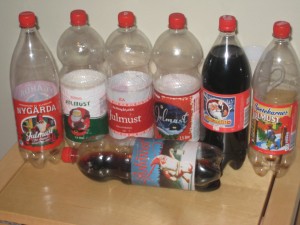I have a few harsh words about the countries I’ve visited and I think it’s a good time to present them (well, not worse than any other time).
Germany
Generally it’s a nice country except for big (by German standards) cities. Though I’d like their trains to be more punctual (yes, people abroad think all German trains are always in time while in reality even bahn.de has special mark for trains they suppose to be punctual). And I apologize to Turks who live in Germany but I believe the biggest problem with emigrants in Germany is with people from ex-USSR countries.
Switzerland
People there have bigger ego than Argentinians. First thing I noticed is their national symbolic on locomotives — I don’t know any other country that does it. And their products often have special ingredients like “Swiss milk” or “Swiss beef” (but they are equally expensive even without them). Too bad that no Swiss chocolate contains cocoa grown in Switzerland.
Speaking about products, their prices make me think rösti was invented by/for hundred foreigners who could afford only one frying pan of potatoes together.
Also I find that all Swiss products are overhyped — is any of them much better than elsewhere? Clocks – you have good ones in Japan or Germany (and even cuckoo clock was not invented in Switzerland). Cheeses — again, there are much better ones in other countries, notably Netherlands and Sweden (the latter just doesn’t produce or export much). Chocolate — French, Italian or Swedish chocolate is not worse.
Norway
I’ve been only to Oslo but from what I’ve seen people there should invest money they get from oil into inviting people with sense of taste. All nice buildings in Oslo (yes, all twelve or so) were build by Swedish or Danish architects. And please make sculpting a major criminal offense (at least before you learn the meaning of “lagom” from your neighbours).
France
It doesn’t matter what I think about them because French people (and their ticket vending machines) seem to completely ignore anybody not speaking French (that includes me).
Belgium
From what I saw I conclude they are trying to build another Ukraine (and they are succeeding at it). It’s not hard, just forget that you should maintain buildings, clean streets or that plain concrete is not the best decorating material. Brussels would probably be better had it been built by architects from Oslo.
Douglas Adams was absolutely right.
Sweden
When I heard Russian pop in Skärholmen mall I realized that Skärholmen is, indeed, not a part of Sweden anymore (I was told so before but found it hard to believe, not anymore).
But my main concern is that there’s no proper E4 rail equivalent so I could not travel from Sundsvall to Umeå or Luleå directly (and I’d like less travelling time on route Stockholm-Sundsvall too).
And I wonder what’s better, lutefisk in winter or surströmming in summer?

